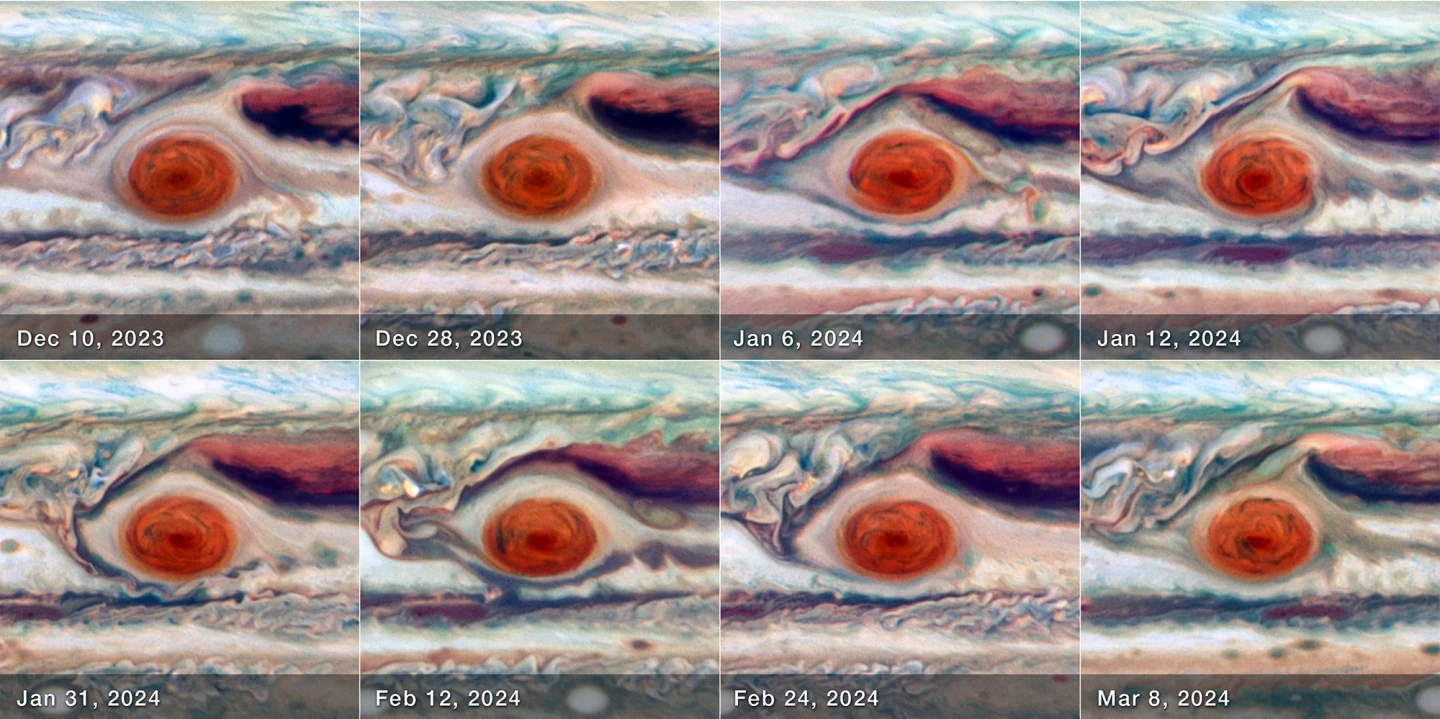High-resolution images taken by the Hubble Space Telescope of Jupiter’s Great Red Spot have revealed that it’s not as stable as we thought. Instead, the Spot is squeezing in and out, with NASA describing it as “jiggling like a bowl of gelatin.”
Astronomers have been keeping an eye on Jupiter’s Great Red Spot (GRS) for at least 150 years. But the fascinating and enormous storm system, which is large enough to swallow the Earth, has given up some new details, thanks to new, high-res images provided by NASA’s Hubble Space Telescope.
Looking every bit like a Van Gogh painting, the images, collected over 90 days between December 2023 and March 2024, reveal that the GRS isn’t as stable as scientists thought.
“While we knew its motion varies slightly in its longitude, we didn’t expect to see the size oscillate,” said Amy Simon from NASA’s Goddard Space Flight Center, and lead author of the paper about the findings. “This is really the first time we’ve had the proper imaging cadence of the GRS. With Hubble’s high resolution we can say that the GRS is definitely squeezing in and out at the same time as it moves faster and slower. That was very unexpected, and at present, there are no hydrodynamic explanations.”

Every year, Hubble monitors Jupiter and the other outer solar system planets through the Outer Planet Atmospheres Legacy (OPAL) program, which has been in place for 10 years. However, these observations were from a program dedicated to the GRS.
Simon and her team of researchers had Hubble zoom in on the Spot, trapped between two jet streams, to examine its shape, size, and subtle color changes.
“As it accelerates and decelerates, the GRS is pushing against the windy jet streams to the north and south of it,” said Mike Wong, a co-investigator from the University of California at Berkeley. “It’s similar to a sandwich where the slices of bread are forced to bulge out when there’s too much filling in the middle.”
NASA’s press release also described the GRS as “jiggling like a bowl of gelatin."
We know, from information collected by the OPAL program, that the GRS is shrinking. The researchers predict it’ll continue to shrink and eventually take on a stable, less elongated shape.
“Right now, it’s over-filling its latitude band relative to the wind field,” explains Simon. “Once it shrinks inside that band, the winds will really be holding it in place.”
It’s hoped that future Hubble images will unlock more secrets about Jupiter and reveal the underlying cause of oscillation that’s causing the Great Red Spot to jiggle like it is.
The study was published in The Planetary Science Journal.
Source: NASA






